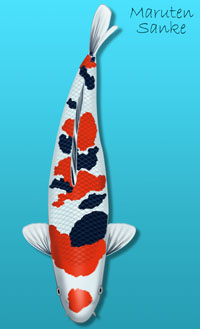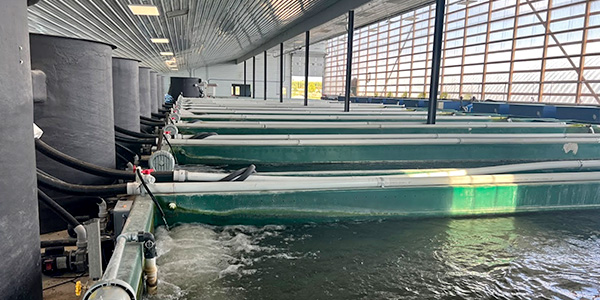Sanke Koi (sawn-kay)
WHITE KOI with RED and BLACK MARKINGS
A Sanke may be one of the most popular koi varieties in Japanese style koi ponds and water gardens. Originally known as Taisho Sanke or Taisho Sanshoku they are commonly called Sanke by most koi enthusiasts in the hobby today. The word Sanke literally means ‘tri color’ in the Japanese language. A Sanke is a koi with three colors; white, red and black. It can be identified as a white koi with a red pattern and occasional black markings.
When you search for quality koi for sale, look for a Sanke that displays a pleasing Kohaku pattern of Hi (red) with the addition of sumi (black) patches as accent markings, all on a clean white base color. Sanke have more varied patterns than Kohaku due to the highly variable addition of Sumi. Inspection of Sanke can, therefore, begin with observation of red patterns. The Hi markings should be that of a good Kohaku, and the sumi should be that of a good Shiro Bekko. Sumi markings appear as roundish patches and should only be located above the lateral line. The Sanke head should be free of sumi. Most generally, hidden black markings appearing under bluish skin will become glossy, fine sumi when they emerge later on.
As a breeder of Japanese koi fish, Kloubec Koi Farm produces Sanke, Doitsu Sanke, and Longfin Sanke (butterfly) koi from Jinbei, Matsunosuke and Momotaro bloodlines. Sanke koi from these lineages usually develop substantial sumi patches of good quality.



